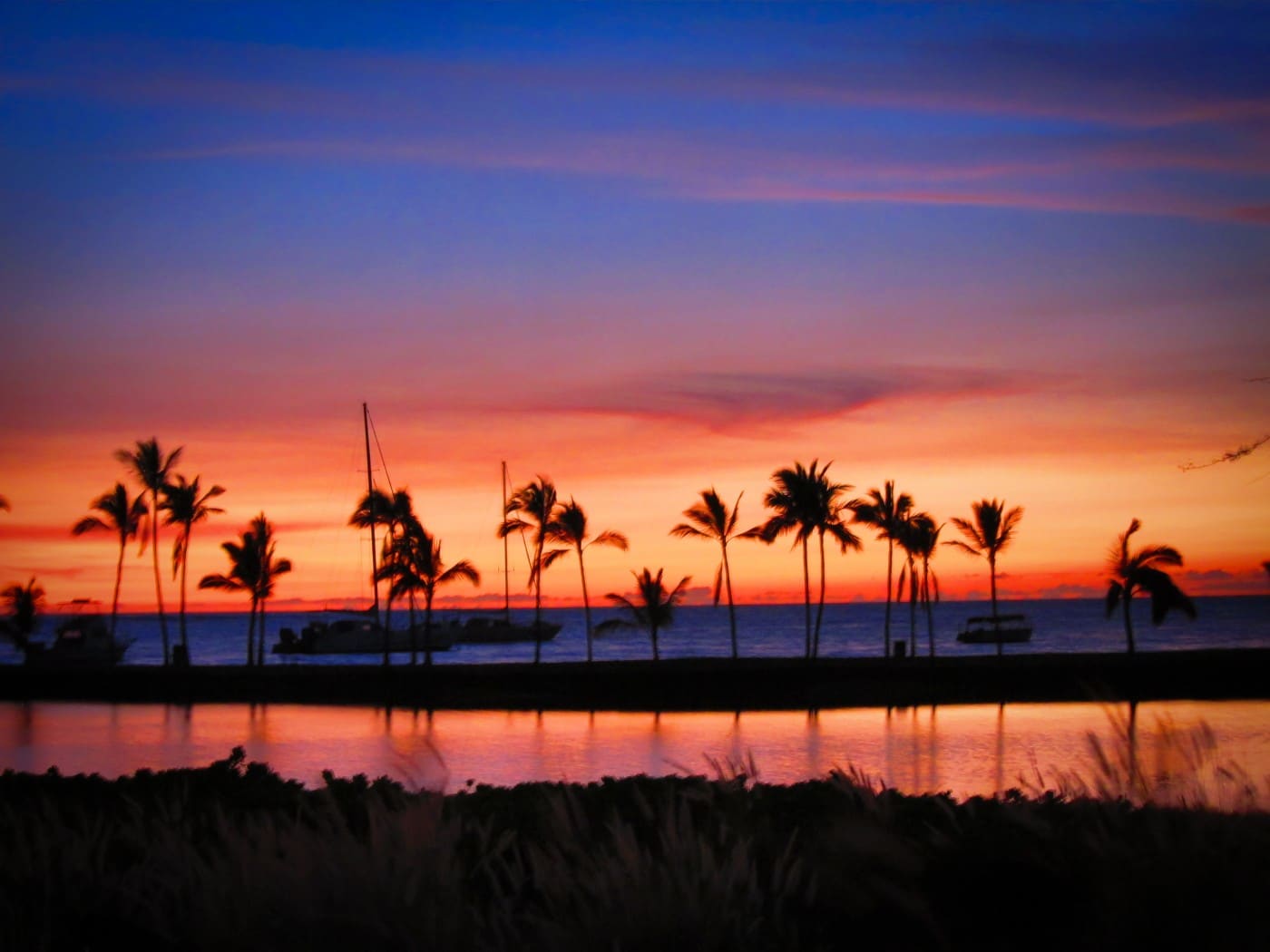[wide]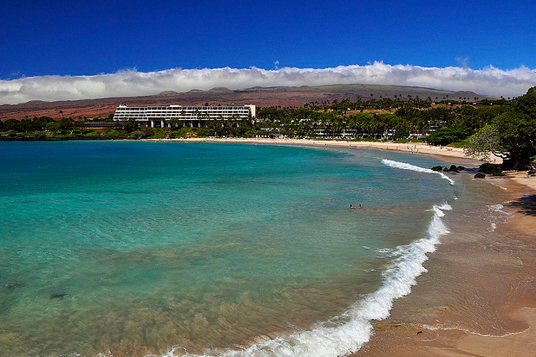 [/wide]
[/wide]
It was the land of fire, it was the land of water, it was the age of new birth, it was the age of decay, it was the season of sunshine, it was the season of rain, it was a place of ease, it was a place of unrest, we had flat fields before us, we had soaring volcanoes before us, the island struck us dumb, and the island put words in our mouths – in short, the island of Hawaii was a land of diversity, of beautiful contradictions that must be seen to be believed.
Ok, so the Big Island of Hawaii has little to do with Dickens’ vision of the French Revolution, but the island’s fantastical contradictions do seem to border on fiction. Most people go to the Hawaiian Islands for lush vegetation, unceasing sunshine, and white sandy beaches. You can find all those great things on the Big Island, but it’s about so much more. The youngest of the islands is unique, and it defies being pigeonholed, even by its own siblings.
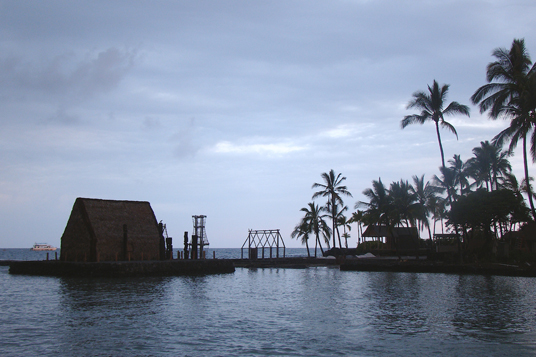
From the moment I saw the island as I soared into Kona Airport, I realized this was a unique place. Crusty, jagged volcanic flows cover the surrounding area like black shag carpet, and huge volcanoes stretch toward the clouds. I also noticed how big it really is—bigger than all of the other Hawaiian Islands combined—so be sure to spend at least a week there because there is a lot of ground to cover. Even now, the island is still growing as Lo’ihi Volcano continues to build itself up underwater until eventually it emerges as a chunk of fresh land on the southern coast.
My home base for this trip was the central hub of the dry side of the island called Kailua-Kona (“-Kona” is added on to distinguish this Kailua from other Kailuas in the islands), a beachside town near the Kona airport. Native Hawaiians really only use two directional words, “mauka” (meaning “inland”) and “makai” (meaning “toward the sea”), but for us mainlanders, Kailua is on the western coast of the island. It’s a classic beach town with great seafood, beautiful beaches, plenty of sunshine, and a rich assortment of shopping. Kailua’s beaches have some of the best snorkeling sites in the state with opportunities to see Green Sea Turtles, Spinner Dolphins, Manta Rays and the occasional White Tip Reef Shark.
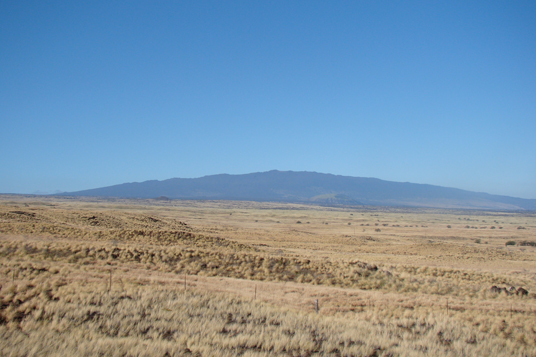
Kailua also has a quaint downtown filled with restaurants and shops where you can rent snorkeling gear, grab a meal, drink the delicious local beer, or buy some of their famous Donkey Balls (chocolate balls with macadamia nuts in the middle). The downtown also doubles as the historic centerpiece of the area, featuring the Moku’aikaua Church (the oldest Christian church in all of Hawaii), the Hulihe’e Palace (the old Hawaiian royal family’s vacation home, which is now a museum) and the Kona Inn (an old inn converted into a fine dining establishment). There’s even a restored ancient Hawaiian temple called the Ahu-ena Heiau on the point jutting out into Kailua Bay.
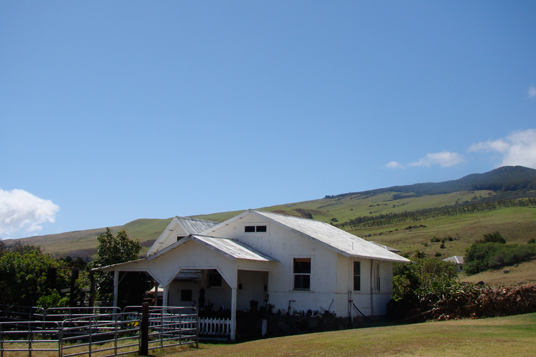
The greatest part about the dry side of the island is how different it is from the rest of the island and the Hawaiian Islands in general. Along the roads, pale, otherworldly grass sways in the wind and small volcanic cones rise up from the flat plains. The roads cut through lava flows that look like strange, black moonscapes, jagged and tortured looking, but with grass and shrubs springing up here and there. And always in sight against the horizon are the shapely and majestic volcanoes Mauna Kea, Mauna Loa, and Hualalai.
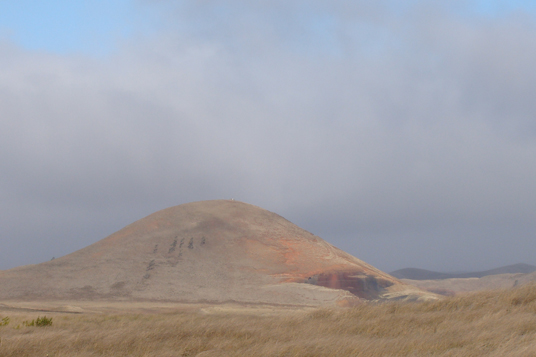
Throw in the west side’s numerous historical sites like the Captain Cook monument, the “Place of Refuge” National Historical Park, and the Kona Historical Society, and you have the makings of a fantastic vacation. But to focus solely on Kailua and its surroundings is to miss the point because Kailua is an excellent launching point from which to tour the rest of the island’s incredible diversity.
To the north is the small town of Waimea, ensconced in the rolling foothills at the base of the emerald green Kohala Mountains. The mountains, presided over by the oldest of the volcanoes, are not as massively grand as nearby Mauna Kea but they are just as beautiful but in a different way. Their summits stand tall over Waimea, the transitional area between the west’s dry plains and lava flows and the east’s lush rainforest. To the south the mountains give way to the flat prairie that was cultivated into pastures in the early 1800’s for the expansion of Hawaii’s cattle industry. Visitors should not miss the Anna Ranch Heritage Center, a picturesque collection of ranches preserved on the outskirts of town.
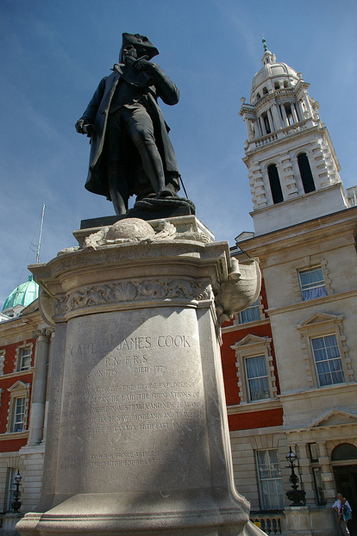
Leaving Waimea, you enter an entirely different world. If you’ve been to Kauai, the northeastern coast of the Big Island, especially the Hamakua Coast, will probably seem familiar. In stark contrast to the dry side of the island, the Hamakua Coast all the way down to Hilo is as wet as it gets. The stunning cliffs and canyons lining the coast are covered with verdant vegetation and hidden waterfalls. Two gems of the drive along the coast are the Akaka Falls and Laupahoehoe Point (the site of a beautiful memorial for the people lost there in the 1946 hurricane). But perhaps most spectacular of all is the Waipi’o Valley—just at the southern edge of the Kohala Mountains—a beautiful rift of agricultural land opening out onto the ocean.
If Kailua is the hub of the dry side of the island, Hilo is the focal point of the rainy side. Hilo is much larger than Kailua, so there are lots of fun things to do, including a tropical rainforest zoo, the Wailoa River State Park, a farmer’s market, and some great museums. But the reason I think Kailua is the more ideal home base for a trip to the Big Island is because it rains almost every day in Hilo. That said, Hilo is a beautiful city with a little more bustle than Kailua, so it’s definitely worth seeing.
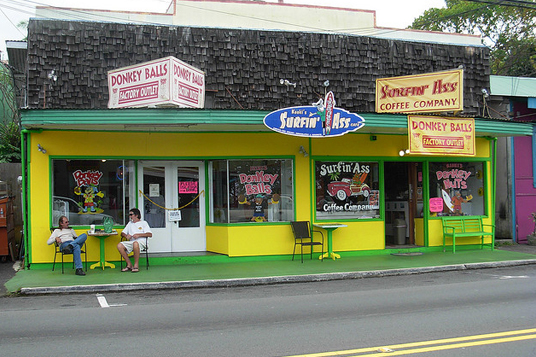
Of course, the final aspect of the Big Island, and perhaps the most famous one, is Volcanoes National Park in the southeast. The park incorporates the summit of Mauna Loa, a vast swath of wilderness filled with fabulous hiking trails and Kilauea Caldera, the main attraction. One of the most active volcanoes in the world, Kilauea had been relatively quiet since last February but erupted while I was there. This was not a full-scale eruption with gushing lava destroying nearby cities, although the Big Island has had a few of those. We didn’t even get to see any fresh lava flows. But we were able to see the glow of the lava in the Halema’uma’u Crater at night, one of the most riveting experiences of my life. Even standing amid the hardened lava of ages past, I could still feel how alive the island is.
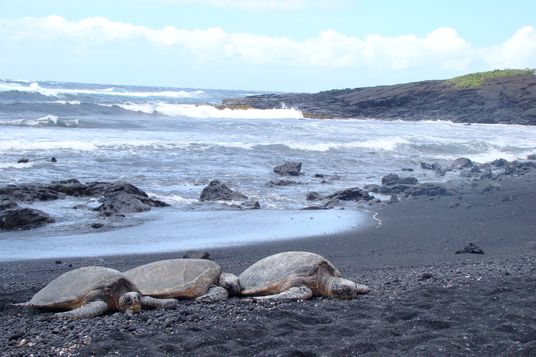
Sadly, humans will never see Lo’ihi rise from the ocean and join the other five volcanoes of which the Big Island is made. The geological clock won’t permit it. But that doesn’t mean that we can’t appreciate the Big Island’s radical geologic changes and awe-inspiring diversity. Even if we can only see the world changing from a relatively limited perspective, there are places and times that force our eyes to open wider and our minds to expand. We can look in awe at a shield volcano rising over 13,000 feet above sea level and begin to understand the tremendous power to create and destroy that the planet possesses. And we can walk barefoot on a black sand beach and see that even lava will one day break down and form something new while all the while a world continues to turn.
[box bg=”#ccc”]
The area code for the Big Island is 808.
Where to Stay:
Kona Coast Resort – Beautiful resort with Mediterranean-style villas on the Kona coast, just south of downtown Kailua-Kona. Each rental comes with a fully equipped kitchen, washer and dryer, cable TV, and complementary Wi-Fi. The resort also has outdoor grills, swimming pools, a basketball hoop, shuffleboard courts, tennis courts, a sand volleyball court, and a fitness center. Perfectly positioned to tour the Kona side of the island. (808) 324-1721 www.shellhospitality.com/hotels/kona_coast_resort/
Sheraton Keauhou Bay Restort & Spa– This resort has an ancient lava flow cascading into the waters along the Kona coast of Hawaii’s Big Island. Be sure to get a rejuvenating spa treatment and attend their fun luau! 78-128 Ehukai Street. Kailua-Kona. (808)930-4900. www.sheratonkeauhou.com
Hilton Waikoloa Village– This property is nestled within 62 oceanfront acres offering breathtaking tropical gardens, tranquil waterways and abundant wildlife. This resort is a paradise all its own, big enough to need a tram or boat to reach its farthest corners. 69-425 Waikoloa Beach Dr Waikoloa. (800) 446-8667. www.hiltonwaikoloavillage.com
Where to Eat:
Kona Brew Co. – Microbrewery and restaurant with excellent beers brewed on the premises, ranging from light ales to stouts. A few are available in select markets outside Hawaii, but most of these beers cannot be had outside of the brewpub, so drink up. Kona Brew Co. is about more than beer, though, their pizzas are also out of this world. They infuse their sauces with some of their flavorful beers and have created appetizers to go with a bounty of sandwiches and salads. But if you don’t get one of their signature pizzas, you are making a huge mistake. www.konabrewingco.com
Village Burger – Small burger joint sequestered in the small ranching town of Waimea. The owner and head chef, Edwin Goto, uses all local and sustainable products for his burgers, including the grass-fed and hormone-free beef from nearby ranches. Big, juicy burgers with fantastic toppings like fresh avocado slices, local goat cheese, broken egg, or Applewood smoked bacon. The fries are amazing too, served with sweet chile, Wasabi mayo and sun dried tomato mayo for dipping, or you can get them crusted in delicious “parmesean goop.” Make sure you try one of the thick and rich Epic shakes made with the favorite local ice cream with a surprise at the bottom. www.villageburgerwaimea.com
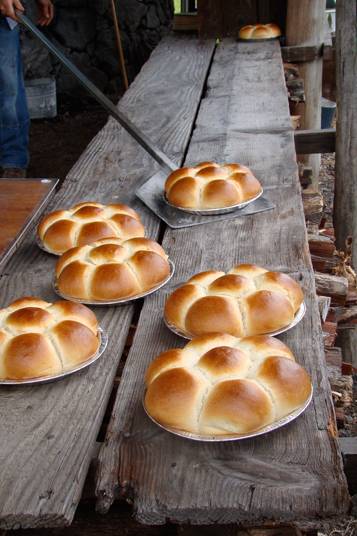
Tex Drive-In – Best place I found for the classic Hawaiian treat, malasadas. Originally created by Portuguese immigrants, these hot, fluffy pastries are like doughnuts but better. Every place does them a little differently, but Tex’s are bigger and more flavorful than any others. Get one filled with apple, apricot, Bavarian creme, cherry, chocolate crème, guava, lemon, mango, pineapple, raspberry or strawberry. But get there early because they sell out by midday. (808) 775-0598www.facebook.com/pages/Tex-Drive-In-Big-Island-Hawaii/106337749394338?sk=info
U-Top-It – tucked away in downtown Kailua-Kona, this restaurant specializes in the Hawaiian Taro PanCrepe. A variation on the traditional crepe, this is a thin pancake with crispy edges made with taro, a Hawaiian staple. They’ve got 57 toppings including fruits, vegetables, meats, cheeses, and sauces that allow you to go either savory or sweet. They also serve breakfast all day in addition to the signature crepes. (808) 329-0092 www.utopitkona.com
What to See:
Volcanoes National Park – a massive park with countless hiking trails for visitors to explore. Centered on the Kilauea Caldera, there are plenty of great lookout points that are accessible by car or foot. Definitely check out the Thurston Lava Tube, which is a short hike through an underground lava tube. The centerpiece is the still active Halema’uma’u Crater, so the glow of lava can be seen at night. When the gas emissions aren’t dangerous, visitors can even hike close to the crater.
Waipi’o Valley – stunning view of the valley, just a short drive north of Honokaa, between Waimea and Hilo on the Hamakua Coast. The fertile, green agricultural land is dotted with fields but the stark cliff sides dropping straight into the ocean is the real draw. For the adventurous, there are several hiking trails across the valley into the Kohala Natural Preserve, but they are strenuous.
Kona Historical Society – a turn off just south of Kailua-Kona that features both the Greenwell Farms Coffee Store and Museum and a Portuguese wood-fired stone oven. Greenwell Farms Coffee is a rich local blend with lots of flavors but the real treat is the “pao doce,” a Portuguese sweet bread that volunteers bake in the stone forno once a week.
Pu’uhonua o Honaunau “Place of Refuge” National Park – a seaside park preserving aspects of traditional Hawaiian life. Features an impressive stone wall that separates the old royal grounds from the pu’uhonua, a “place of refuge,” where dishonored citizens or criminals could find absolution and protection. The grounds also include a restored heiau, an ancient Hawaiian temple, guarded by ki’i, the fierce-faced totem poles representing local gods.
Waimea – a quaint ranching town at the base of the Kohala Mountains in the north of the island. Great restaurants and beautiful views of the mountains and the volcano, Mauna Kea. The Anna Ranch Heritage Center on the outskirts of town is a collection of old, white ranch buildings that hosts a weekly farmer’s market.[/alert]

